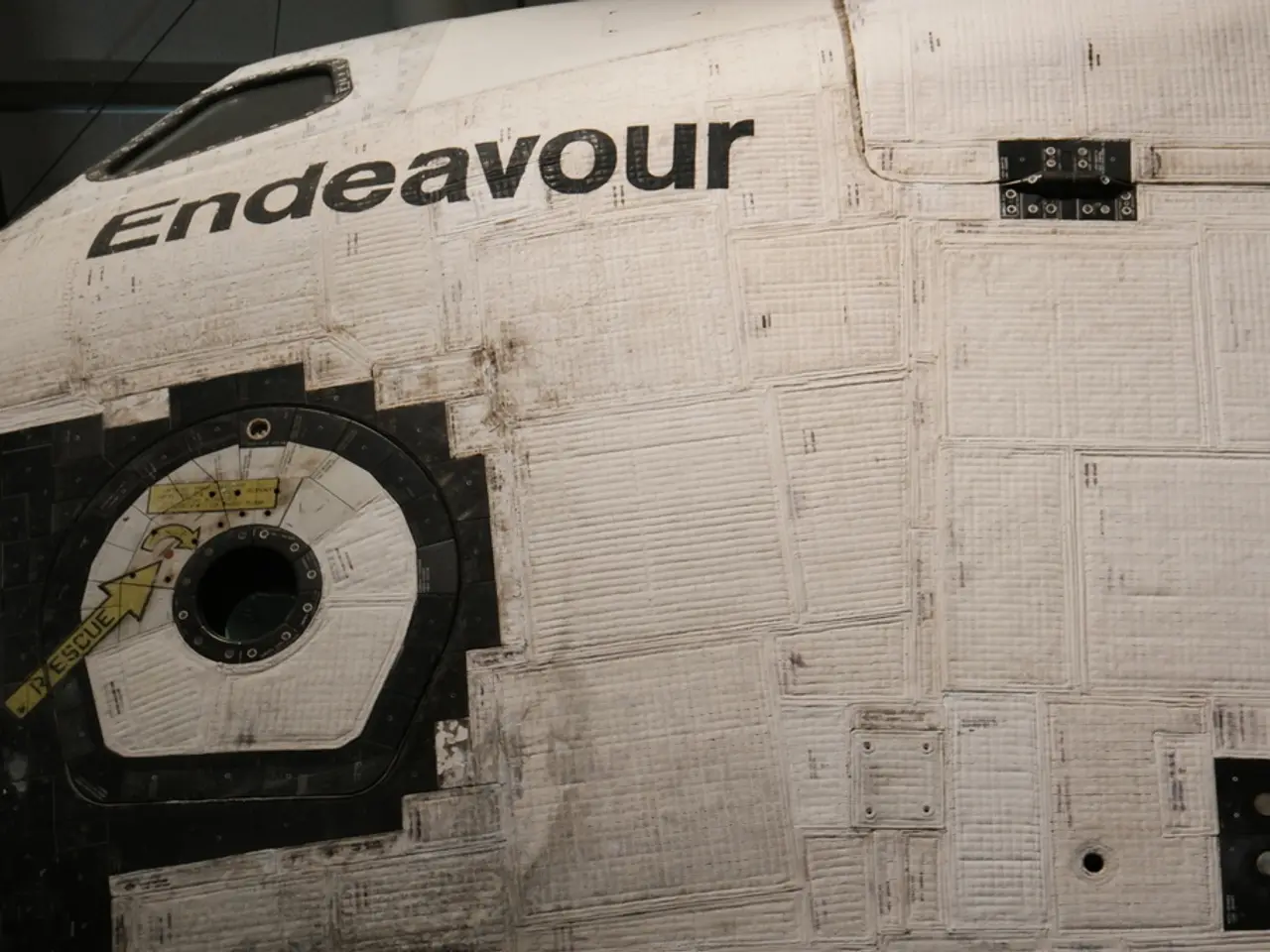Navigating the Complexities Ahead for Space Traffic Control: Proliferation of Smaller Satellites and Escalating Risks
In the increasingly crowded skies of Earth's orbit, a novel solution is being explored to address the challenges posed by the proliferation of small satellites and the strain on traditional space traffic monitoring systems. This solution comes in the form of visual transponders, small LED devices designed to facilitate easier location and identification of satellites in orbit.
One such visual transponder, dubbed "Blinker," was developed by The Aerospace Corporation. Built using inexpensive off-the-shelf materials, Blinker was launched in 2022 on an experimental cubesat named Slingshot. This innovative device offers a low-cost way to visually track small satellites that are otherwise hard to detect with traditional radar and optical systems.
The need for such a technology is evident in the growing number of small satellites, such as cubesats, and the associated threats to space situational awareness (SSA). The traditional space traffic monitoring system, operated by the Space Force, is under increasing strain due to this proliferation. The visual transponder provides a supplemental method to the existing Space Force Space Surveillance Network, which, while robust, faces difficulties due to the sheer volume and small size of new space objects.
The experimentation with cubesats like Slingshot demonstrates the viability of visual transponders as a solution to enhance space traffic management (STM) capabilities under future operational conditions strained by miniaturized satellite constellations and increasing threats.
The Space Force's Space Operations Command currently operates the Space Surveillance Network (SSN), which tracks approximately 60,000 objects in orbit, including operational and decommissioned satellites, as well as larger orbital debris. However, the SSN is in need of different detection technologies or phenomenologies to respond to such threats, as there is no single phenomenology that can solve the entire flight.
Radar and passive radio frequency detection each have their advantages and disadvantages, and the Space Force needs to be able to fuse data from different phenomenology together to make the best use and take advantage of their strengths. This is particularly important in the context of cubesat confusion, where up to 20 percent of the satellites on a launch remain uncatalogued up to 250 days after the launch.
The Space Force also has over 200 SSA information sharing agreements, with about 30 being with allied nations and the remainder with commercial space operators. The SSN shares data for free with allied governments and some commercial space operators, a practice that can save resources for high-value assets that need them.
However, the resources for space surveillance are limited, and self-reporting by orbiting objects can help alleviate this strain. The move to transfer the collision avoidance mission to a civilian agency was started seven years ago, with the primary purpose of the SSN shifting to a civilian organization to free up the military for military tasks.
Recently, the Trump administration's budget proposal for fiscal 2026 zeroed out funding for the effort to transfer the STM mission from the Space Force's Space Operations Command to the Office of Space Commerce in the National Oceanic and Atmospheric Administration. This decision could potentially impact the development and deployment of visual transponders like Blinker, which are crucial for maintaining space situational awareness in the face of the growing number of small satellites.
In conclusion, the visual transponder experiment on the Slingshot cubesat exemplifies a novel technology path in addressing STM challenges induced by small satellites, enabling improved tracking and identification via visual signals in orbit. As the number of small satellites continues to grow, the need for supplemental technologies like visual transponders becomes increasingly important for maintaining space situational awareness and ensuring safe and efficient space traffic management.
[1] Source: The Air & Space Forces Association
- The Aerospace Corporation developed a visual transponder called Blinker, launched in 2022, aiming to facilitate easier location and identification of satellites in Earth's orbit, addressing the challenges posed by the proliferation of small satellites.
- The Space Force's Space Surveillance Network (SSN) operates to track approximately 60,000 objects in orbit, but the network is in need of different detection technologies, like visual transponders, to respond to threats from the increasing number of small satellites.
- The viability of visual transponders as a solution to enhance space traffic management (STM) capabilities under future conditions strained by miniaturized satellite constellations has been demonstrated through experimentation with cubesats like Slingshot.
- The Space Force needs to be able to fuse data from different detection technologies, such as radar and passive radio frequency detection, together to make the best use of their strengths in the context of cubesat confusion.
- The growing number of small satellites and the associated threats to space situational awareness necessitate supplemental technologies like visual transponders for maintaining safe and efficient space traffic management.
- The move to transfer the collision avoidance mission to a civilian agency was started seven years ago, with the primary purpose of the SSN shifting to a civilian organization to free up the military for military tasks, but a recent budget proposal for fiscal 2026 has zeroed out funding for this effort, potentially impacting the development and deployment of visual transponders like Blinker.




